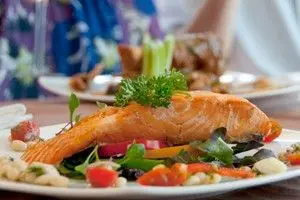Contents
Update on food indices

The ORAC index
ORAC index (free radical absorption capacity)1 allows to assess the antioxidant capacity of a food. This means that the food acts against the free radicals produced by the body by absorbing them. Free radicals are harmful substances generated by the body that damage cells, and lead to premature aging and the development of certain diseases. Thus, the role of antioxidants is to fight against the oxidation caused by these free radicals. Vitamin C is found among the list of antioxidants2, vitamin E3 (which regenerates cells), zinc4, omega-3s (which help fight diabetes5), polyphenols6, selenium7 and beta carotene8. It is not complicated to find them: they are present in most fruits (red fruits, grapes, apples) and vegetables (artichoke, red beans, spinach, pepper), cereals (bran, whole grains), meats (calf’s liver) and fish (salmon, tuna).
How to assess the antioxidant potential of a food?
The ORAC index is developed according to the test of the same name. It is usually expressed in units per 100 grams1. The higher the index, the greater the antioxidant potential of the food. It is advisable to consume between 3 and 000 ORAC units per day. To do this, you just need to include fresh and colorful products in your diet. The test developed by two American scientists made it possible to establish a list of foods with the highest ORAC index, and therefore the richest in antioxidants.1. Here is a selection:
Food | ORAC value |
Acai berries | 102 700 |
Dark chocolate (more than 70% cocoa) | 20 816 |
Blackberries | 19 220 |
Nuts | 13 541 |
Artichoke | 9 416 |
Cannegerbes (cranberry) | 9 090 |
plums | 6 083 |
Raspberries | 5 065 |
Almonds | 4 454 |
figs | 3 383 |
Sources
David B. Haytowitz, Seema Bhagwat. USDA Database for the Oxygen Radical Absorbance Capacity (ORAC) of Selected Food, Release 2. U.S Department of Agriculture. May 2010. Padayatty SJ, Katz A, Wang Y, Eck P, Kwon O, Lee JH, Chen S, Corpe C, Dutta A, Dutta SK, Levine M. Vitamin C as an antioxidant: evaluation of its role in disease prevention. J Am Coll Nutr. 2003 Feb; 22(1):18-35 Maret G. Traber, Jeffrey Atkinson. Vitamin E, antioxidant and nothing more. Free Radic Biol Med. 2007 Jul. 1;43(1):4-15 Powell SR. The antioxidant properties of zinc. J Nutr. 2000 May; 130(5S Suppl):1447-54S Hajianfar H, Paknahad Z, Bahonar A. The effect of omega-3 supplements on antioxidant capacity in patients with type 2 diabetes. Int J Prev Med. 2013 May; 4(Suppl 2):S234-8 Kanti Bhooshan Pandery, Sued Ibrahim Rizvi. Plant polyphenols as dietary antioxidants in human health and diseases. Oxid Med Cell Longev. 2009 Nov-Dec; 2(5):270-278 Ujang Tinggi. Selenium: its role as antioxidant in human health. Environ health Prev Med. 2008 Mar; 13(2): 102-108 Pava SA, Russell RM. Beta-carotene and other carotenoids as antioxidants. J AM Coll Nutr. 1999 Oct; 18(5):426-33










